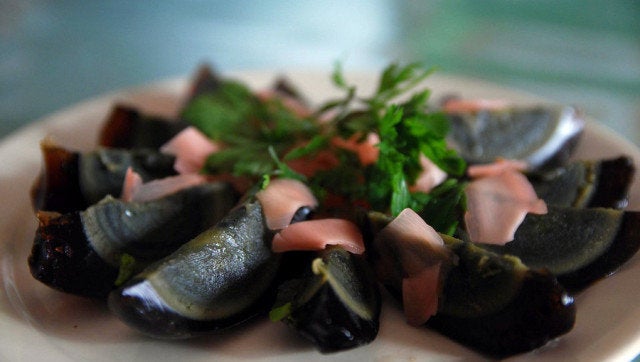
What Is It Anyway? is a series that examines the histories behind peculiar and obscure foods. Today, we're explaining century eggs.
So, what are they, anyway?
Long story short, century eggs are preserved eggs. They are also referred to as thousand-year eggs or millennium eggs, but are not preserved for a millennium, one thousand years, or even a century. The process actually takes anywhere from a few weeks to a few months, and involves soaking eggs in a saline solution. Duck, quail or chicken eggs can be used. The solution usually consists of clay and salt, but can also include ash, quicklime and rice hulls. It causes the yolk of the eggs to take on a creamy, cheese-like texture, and transforms the whites into a dark-colored jelly.
They can be eaten alone, but are often served with pickled ginger root. They can also accompany congee, or rice porridge.
Etymology
Century eggs have many names, including the aforementioned few. In China, they are sometimes referred to as "pine-patterned eggs." This is due to the intricate, woodland-looking patterns that show up near the eggs' surface.
The Thai name, khai yiao ma, translates as "horse urine eggs." This is rooted in the misconception that the eggs are made by soaking in horse urine -- a belief that is held due to their pungent odor.
History
According to legend, these eggs have existed for centuries, with their accidental discovery dating back to the Ming Dynasty in China. A resident of the Hunan province supposedly discovered duck eggs left in a pool or slaked lime and decided to try them.
